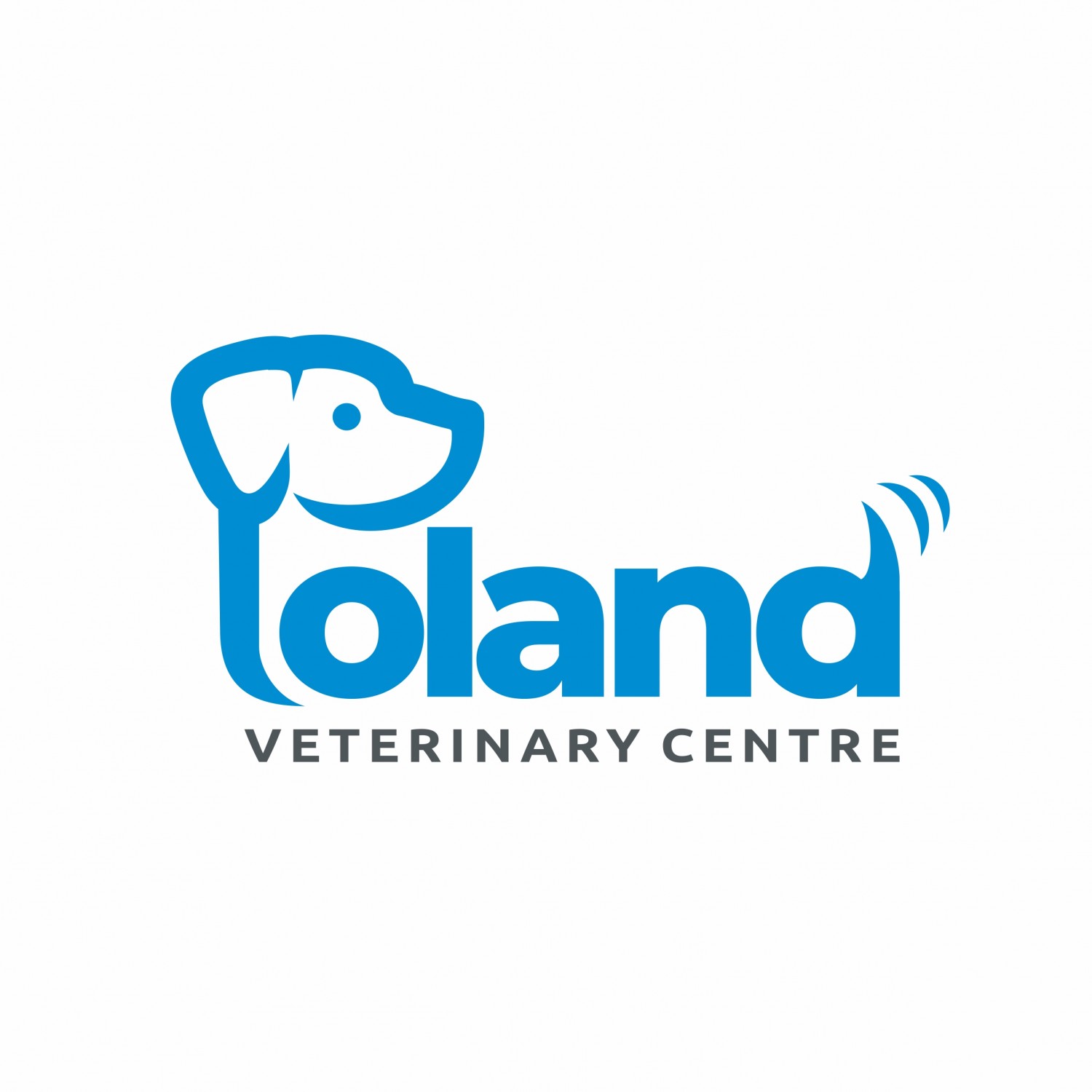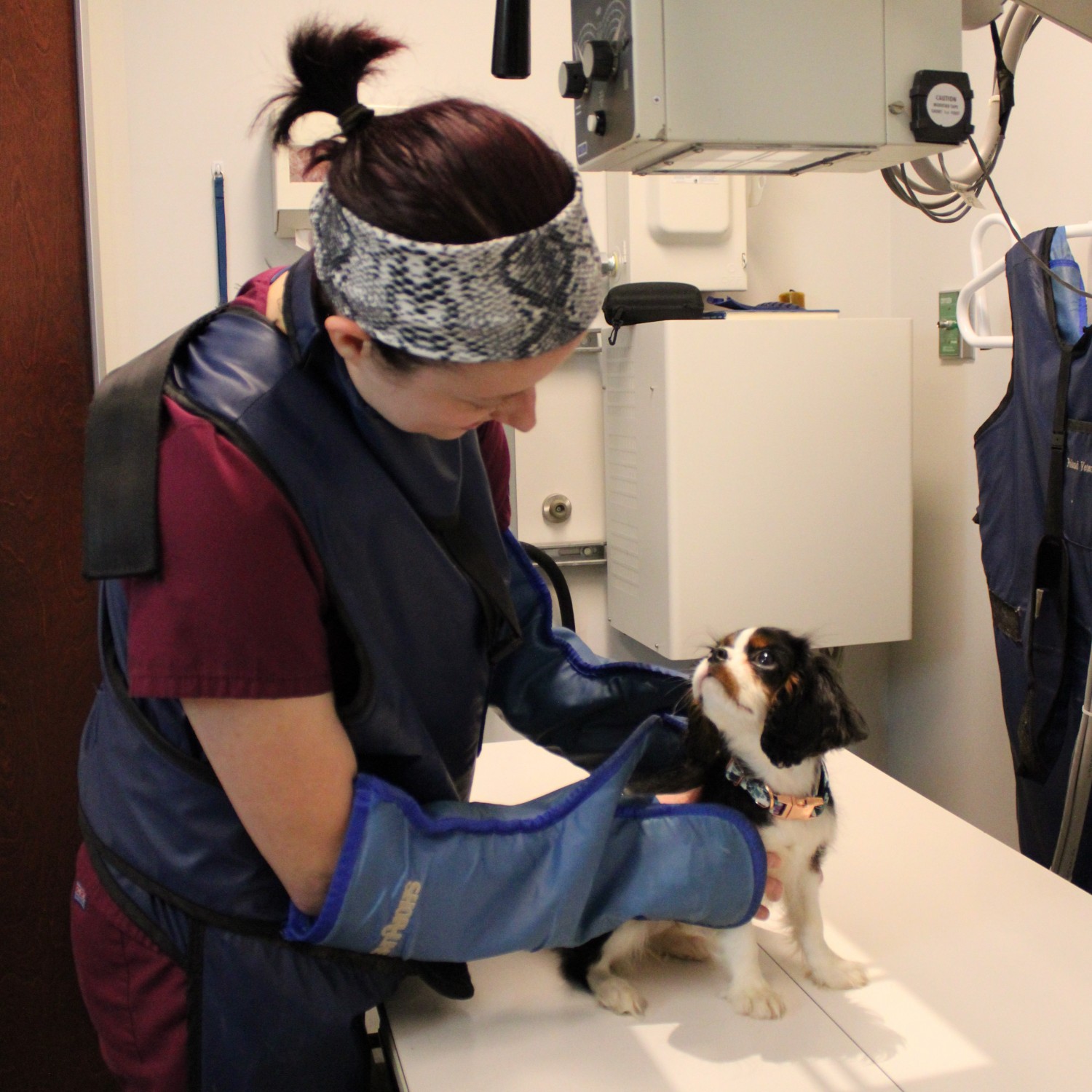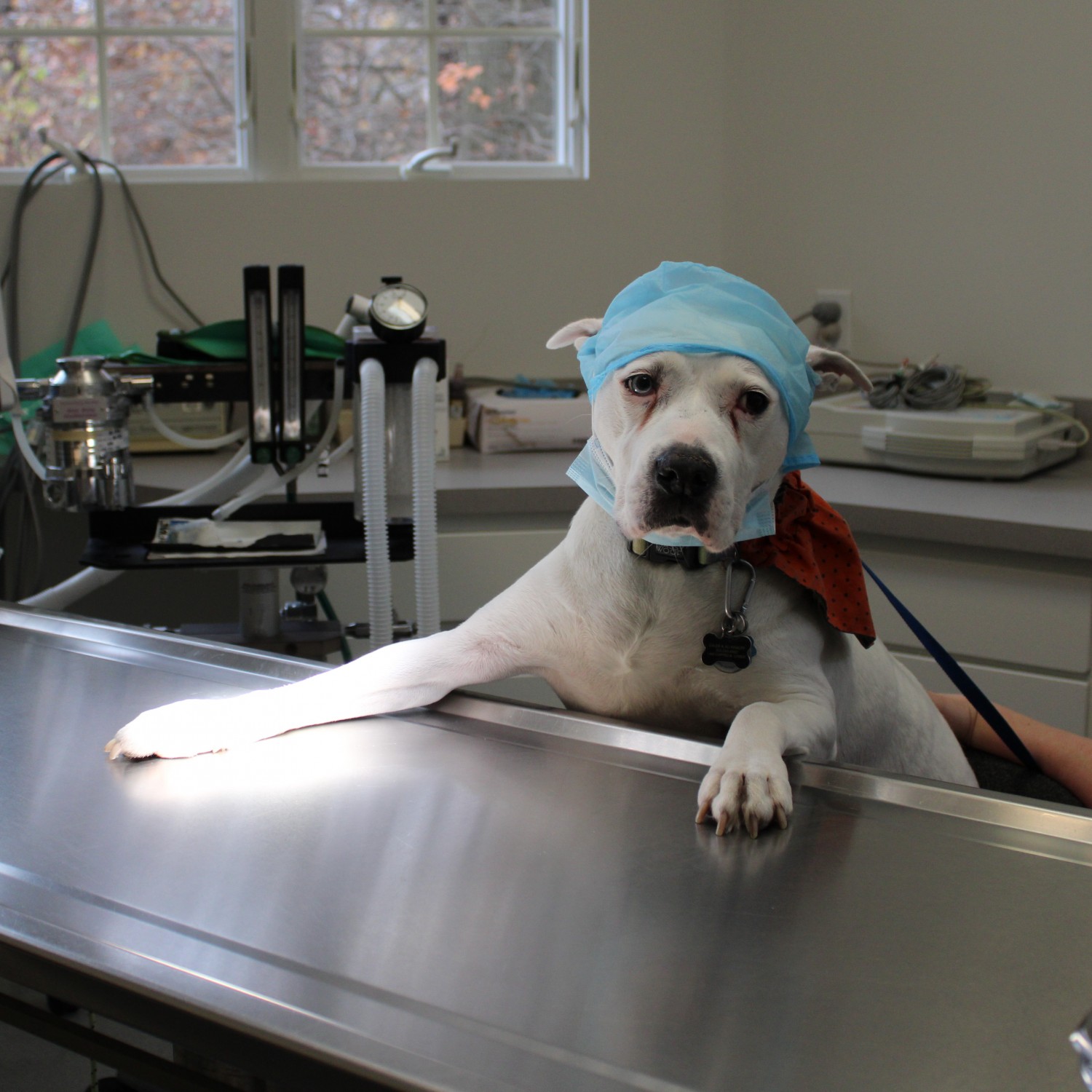|
At Poland Veterinary Centre, we strongly believe that good oral health is critical to the overall health of dogs and cats. Dental care for pets is becoming increasingly sophisticated. The necessary equipment and training require a significant investment of both time and money. Dr. Daugherty has a special interest in veterinary dentistry. He and several of our registered veterinary technicians have attended multiple veterinary dental conferences in order to provide the most up to date and advanced dental care possible for our patients. Veterinary dentistry is a rapidly evolving discipline, and keeping up with the latest advances requires an ongoing effort by the doctors and staff. We offer a wide range of dental services, including the following procedures:
Dental Prophylaxis: This is what is commonly called teeth cleaning, but in reality, a proper dental prophylaxis involves much more than simply removing dental tartar from the teeth. This makes it difficult for pet owners to compare apples to apples.
All of our dental patients receive an oral ATP, which stands for oral assessment, treatment, and plan. The ATP consists of the following:
- Supragingival ultrasonic scaling – Supragingival means above the gumline. This is the removal of the tartar on the crowns of the teeth.
- Subgingival scaling – This is the removal of tartar, plaque and bacteria that is present below the gumline. This is a critically important step, as this material is far more harmful to the pet than the visible tartar on the crowns of the teeth. Subgingival infection is what causes gingivitis, which will progress to periodontal disease if not treated.
- Probing – This is also a vital step. An instrument called a periodontal probe is placed into the space under the gumline around each tooth at six different spots to evaluate for the presence of periodontal pockets. This space is normally no more than 2mm deep in dogs, and less than 1mm in cats. If a periodontal pocket is present, it is measured, and the treatment needed depends on the depth and location of the pocket. A pocket deeper than 4-5mm requires periodontal surgery or extraction of the tooth. See periodontal disease for a more in-depth discussion of the disease and treatment options.
- Dental charting – Our dental technicians record all abnormal findings on a very detailed dental chart. Fractured teeth, periodontal pocket depth and location, attachment and bone loss, and abnormal mobility of teeth are a few of the dozens of pieces of information that are noted in this chart.
- Dental x-rays – The roots of canine and feline teeth are very large (most are far longer than the part of the tooth visible in the mouth), and it is literally impossible to be certain that there is no disease present in or around these structures without taking detailed dental radiographs. Without this step, we would miss many serious and painful problems. Your pet cannot tell us he/she has a toothache, and cleaning the teeth without addressing painful problems is simply not acceptable. Scroll down to see examples of dental radiographs.
- Polishing – We use a fine paste and a special instrument to polish the surfaces of all teeth after being cleaned. The cleaning process causes many very tiny scratches on the enamel surface, and if they are not polished to smooth them out, the tooth surface acts like Velcro, and bacterial plaque actually sticks to the teeth very quickly.
- Fluoride treatment – Fluoride application reduces tooth sensitivity, strengthens enamel, and has some effect in slowing the accumulation of plaque bacteria.
At this point, it is clear that teeth cleaning in our practice is far more complicated than most pet owners realize. Removal of visible tartar has little to no benefit to the pet. All parts of the mouth, including those that can’t be seen visibly, must be evaluated, and any disease found must be treated properly. We want to make your pet feel better and be better, not just look better.
Oral surgery: Services range from extraction of infected or fractured teeth to removal of oral tumors, periodontal surgery, and repair of oronasal fistulas.
Below is a photograph of a patient's teeth before any scaling, probing, or polishing has been performed. Outwardly you may notice that the patient's teeth have a moderate amount of dental calculus and staining. You may also notice that there is a moderate amount of gingivitis or inflammation along the gum line. These are signs of periodontal disease. Other signs of periodontal disease that you may see in your pet include halitosis (bad breath), bleeding gums, or difficulty chewing.
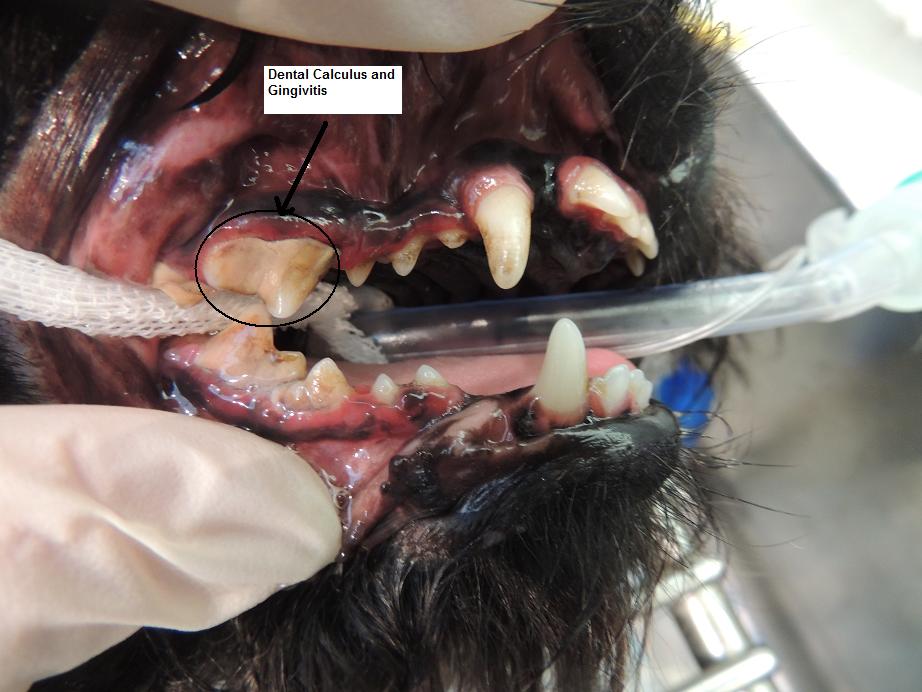
Below is the same patient's teeth after they have been scaled, cleaned, and probed. The tartar has been removed, and the gums are already starting to look healthier! The next and most important step in the dental prophylaxis procedure is the dental radiographs.
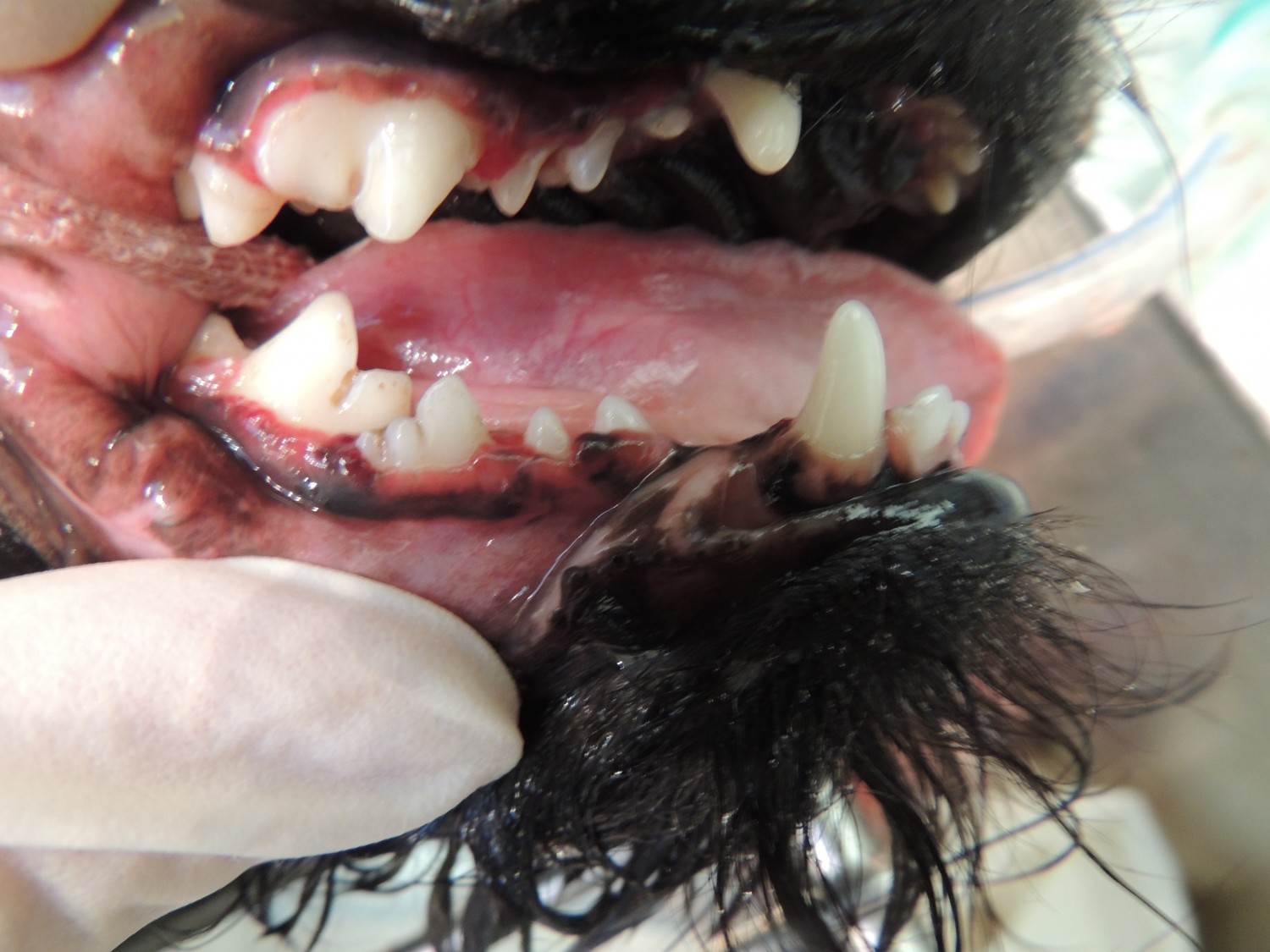
Dental digital radiography (Dental X-rays): We have digital sensors that allows us to view dental x-ray images within seconds and determine if further treatment, such as periodontal surgery or extraction of a tooth, is necessary for a patient. Without intraoral x-rays, it is impossible to determine if a tooth is healthy or diseased. We strongly believe that every patient that is under anesthesia for any dental procedure must have dental x-rays taken in order to provide the best possible care.
|
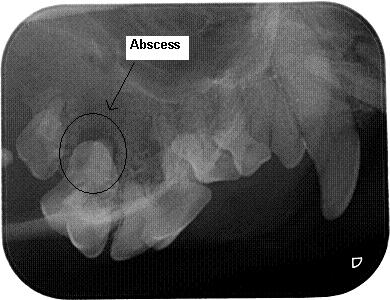
|
This is a radiograph of the patient's right upper arcade. The dark area (circled) around the premolar in question is bone and tissue loss caused by an abscess. There was no indication of an abscess in this location when the mouth was being probed. This tooth must be surgically extracted to prevent any further bone loss and to remove the source of infection. This is a great example of why dental radiographs are an essential part of a proper, high-quality dental prophylaxis.
|
|
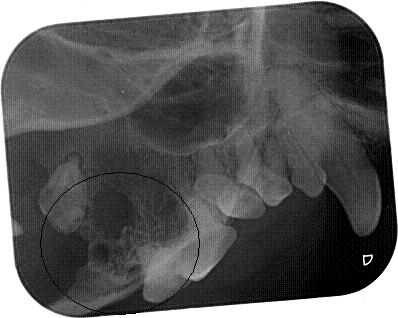
|
This is a radiograph taken of the same area following removal of the tooth. Post-extraction radiographs are important to ensure that the entire tooth was removed. Root fragments left inside the gingiva can cause several problems for the pet in the future.
|
|
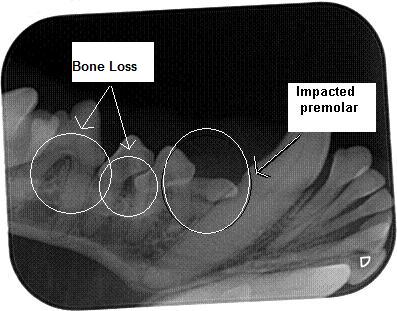
|
This radiograph was taken of the lower right arcade of the same patient's mouth.
The arrows on the left highlight areas of bone loss around two of this pet's premolars. Some types of bone loss require extraction of the affected teeth, while others do not. The tooth furthest to the left has more severe bone loss that extends to the root. This tooth must be surgically extracted to prevent further damage and infection.
The circled area on the right shows an impacted premolar which was not visible during examination of the pet's mouth. This tooth must be surgically extracted to prevent infection and formation of cysts.
|
|
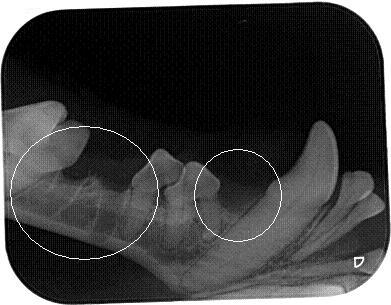
|
This is a radiograph of the area following removal of both teeth. As you can see, no tooth fragments have been left behind and the patient will no longer be at risk of infection, further damage, or oral pain.
|
The picture below is the patient following surgical extraction of her diseased teeth. The extraction sites are closed with absorbable sutures that will dissolve over time. A post-op exam is scheduled 10-14 days following surgery to ensure that the pet's gingiva is healing well. Every pet's pain level is assessed and treated appropriately. Most pets are able to eat their normal diet without difficulty. Pet owners frequently report that their pets are acting like puppies and kittens again within a few days, as the source of infection and pain has been resolved!
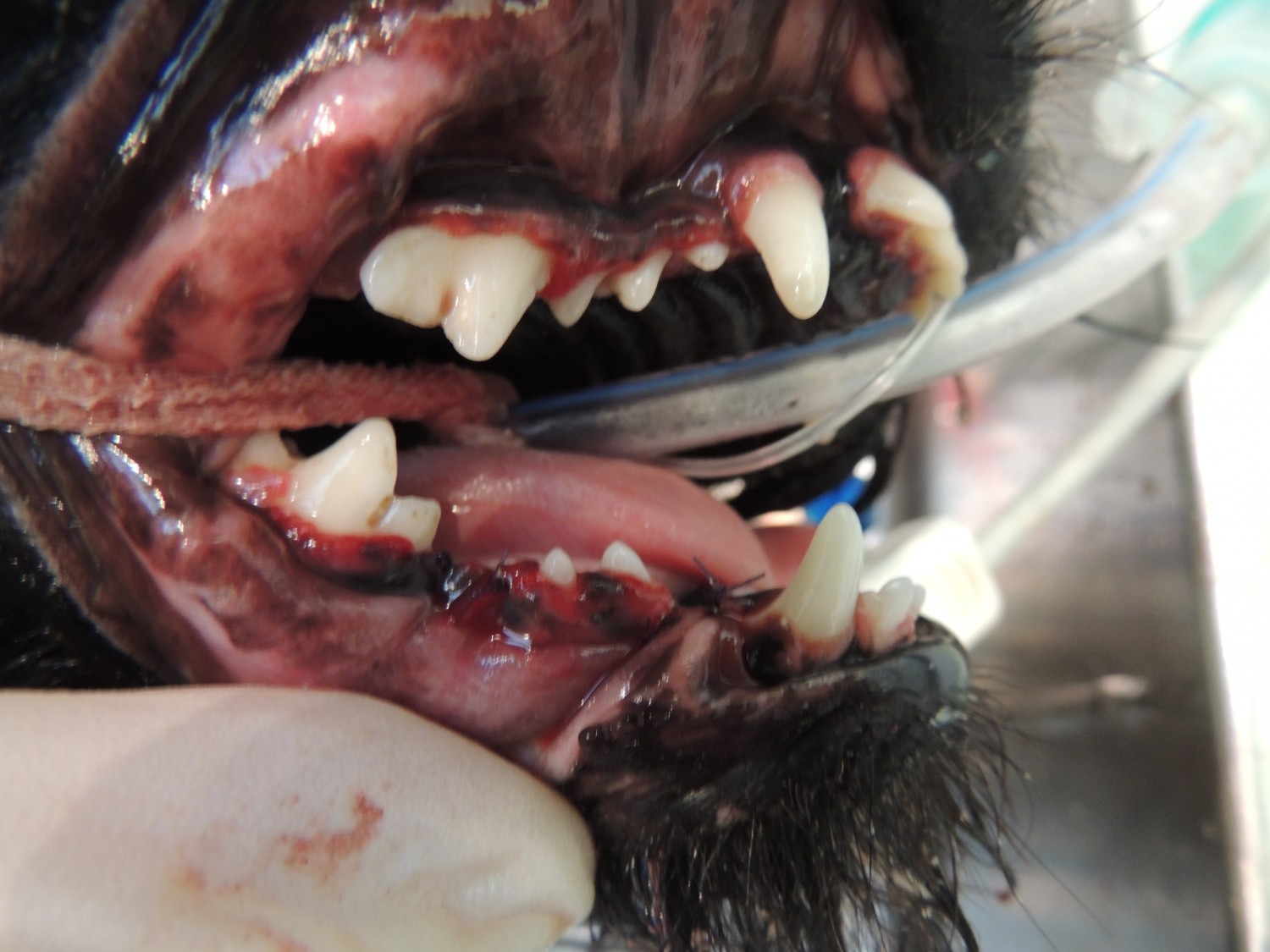
If you feel your pet may be exhibiting signs of dental disease, please call our office to schedule an exam. Another very important part of oral care is prevention of dental disease. Dental disease can be prevented by routine home oral care including teeth brushing, oral rinses, and much more. To learn about home dental care, click here.
|

